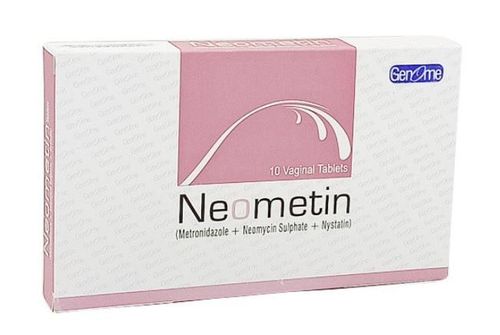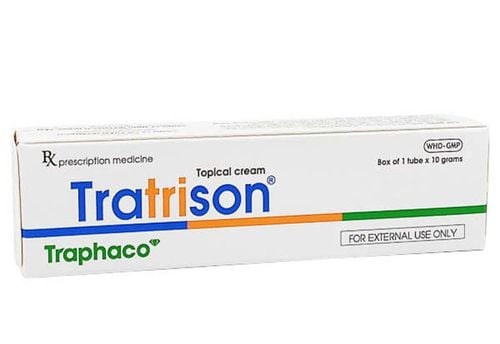This is an automatically translated article.
The article is professionally consulted with Master, Doctor Nguyen Minh Son - Interventional Cardiologist - Department of Medical Examination & Internal Medicine - Vinmec Nha Trang International General Hospital.Candida is a type of yeast that is part of a family of fungi that commonly live in and on the human body, such as in the skin, mouth, intestinal tract, and genital area. While Candida doesn't cause any problems, when overgrown, they can cause infections like candida infections. Candidiasis in children will cause local lesions, affecting the child's development, if not treated, can progress to chronic.
1. What is Candida infection in children?
Candida infections in children most commonly in the mouth, also known as oral thrush or thrush, are common in infants and toddlers. Thrush can also affect the nails, eyes, and skin folds in the neck and armpits, as well as the diaper area, including the vagina and groin folds.Newborns and young children have certain risk factors for candida infection higher than others when:
During labor: Infants with maternal candidiasis can occur right away. when the baby is still in the uterus, but most commonly when it passes through the vagina at birth. Medication: Sometimes children get a candida infection after taking antibiotics. Although antibiotics fight germs that cause illness in children, they can also affect strains of "good" bacteria that help keep the symbiotic population in check. Not rinsing your mouth with water after using the inhaler can also lead to a candida infection. Health conditions: In some children with limited health conditions, fungi can enter the bloodstream. The most at-risk of blood candida infections include infants born prematurely or with very low birth weight, children with long-term intravenous catheterization, and children with weakened immune systems due to cancer, taking medications. For these children, oral nystatin and fluconazole are often used to prevent candidiasis. If a Candida infection has progressed to become chronic or occurs in an older child's mouth, it could be a sign of a weakened immune system, such as infection with human immunodeficiency virus (HIV). . A candida infection of the skin, mouth (thrush), or even vaginal candidiasis in children over 2-3 years old, can also be a sign of diabetes.
2. What causes Candida infection in children?
Yeast normally lives in the body and is not harmful and is found on the skin, in the digestive system (including the mouth and throat) and in the genital area. However, they can cause infections under certain conditions. This can happen when the skin is damaged, it is warm and humid, or when the child has a weak immune system. In some severely ill children, the fungus can infect deeper tissues or the bloodstream and cause serious illness.Medicines with antibiotics or corticosteroids can also cause yeast overgrowth as those drugs destroy the bacteria that normally inhibit yeast growth.

Môi trường ẩm ướt và hệ miễn dịch yếu làm tăng nguy cơ nhiễm nấm candida ở trẻ em
3. Signs and symptoms in children with candidiasis
Newborns In infants, symptoms appear to include painful white or yellow patches on the tongue, lips, gums, roof of the mouth, and inner cheeks. The fungus can also spread into the esophagus, making it painful for a child to swallow. In addition, strains of Candida on the skin can make diaper rash caused by a fungal infection worse, causing redness and sensitivity in the affected area, along with a satellite red border.Adolescents Adolescent girls with a vaginal yeast infection may have symptoms such as itching, pain, redness, and a strong-smelling vaginal discharge.
Children receiving intravenous drugs Symptoms are varied in children with candidiasis during treatment with chemotherapy or long-term medications given through an intravenous catheter.
In these cases, the fungus easily enters the blood system. Once in the bloodstream, yeast can travel throughout the body, infecting the heart, lungs, liver, kidneys, eyes, brain, and skin. The early signs of a Candida blood-borne infection are fever and blockage of the venous catheter.
4. How is Candida infection in children diagnosed?
Pediatricians will diagnose Candida infections in children, especially high-risk subjects, by observing the surface lesions of the body caused by the fungus. Fragments of candida lesions sometimes need to be searched in the mouth, vagina, or in other skin lesions for signs of fungal infection.Ultrasound or computed tomography will be indicated when it is suspected that candida lesions have developed in the brain, kidney, heart, liver or spleen following sepsis. Blood or oral wound cultures are sometimes taken to culture the fungus in the laboratory and determine the type and sensitivity of the yeast.
5. Treatment of Candida infections in children
Antifungal drugs are used to treat candidiasis in children or subjects with general fungal infections. The antibiotic nystatin is often prescribed for children with infections such as oral thrush or Candida-related diaper rash. In addition, specific medications for candidiasis vary, depending on the part of the body where the infection is concentrated.If candida has spread through the bloodstream, the pediatrician will need to prescribe an intravenous antifungal. Some of these drugs cause unpleasant side effects, but most children tolerate them well.
After starting treatment, most candida infections in children go into remission within about 2 weeks. However, it is not uncommon for children to have recurrent candida infections. One particular example is the chronic repeated infant thrush which is sometimes associated with the use of a pacifier or bottle that has not been properly boiled to get rid of the fungus.
However, candida infections are sometimes much more difficult to treat if the child has an intravenous catheter or a weakened immune system. Tests are also often done to evaluate the control of the infection or to see if the infection has spread to other parts of the body. Antifungal therapy can take weeks to months in severe cases of candidiasis in children.

Thuốc điều trị nhiễm nấm Candida ở trẻ em tùy thuộc vào tình trạng bệnh và vị trí nhiễm trùng
6. How can I help prevent candida infections in children?
Here are some ways to help reduce the risk of candida infection in children:Change diapers often: Keep the diaper area as clean and dry as possible. Use antibiotics only when needed: Since fungal infections (thrush or vaginitis) often follow courses of antibiotics, it's important to use them only as prescribed by your doctor. Follow instructions for using asthma medications: If your child has asthma, make sure he or she rinses his mouth with water after using inhaled steroids for treatment. Good control of diabetes: Stable blood sugar values will help reduce the risk of Candida infections. In a nutshell, candida is a yeast infection that is usually harmless at first and is found on the skin, vaginal area, and digestive system. However, when overgrown, it causes illness with rashes, itching, and other symptoms. Treatment of candidiasis in children is a long process and needs to be coordinated with other care such as hygiene, nutrition, and general health improvement to help quickly control the fungus before it invades the organ systems. as well as relapse prevention.
Currently, the Pediatrics Department at Vinmec International General Hospital is trusted by many parents to examine the diseases that infants and young children are susceptible to. Vinmec brings satisfaction to customers and is highly appreciated by industry experts by:
Gathering a team of leading pediatricians: including leading experts with high professional qualifications ( professor, associate professor, doctorate, master), experienced, worked at major hospitals such as Bach Mai, 108.. The doctors are well-trained, professional, have a heart - a vision. Understanding young psychology. In addition to domestic pediatric specialists, the Department of Pediatrics also has the participation of foreign experts (Japan, Singapore, Australia, USA) who are always pioneers in applying the latest and most effective treatment regimens. . Comprehensive services: In the field of Pediatrics, Vinmec provides a series of continuous medical examination and treatment services from Newborn to Pediatric and Vaccine,... according to international standards to help parents take care of their baby's health from birth to childhood. Advanced techniques: Vinmec has successfully deployed many specialized techniques to make the treatment of difficult diseases in pediatrics more effective: neurosurgery - skull, stem cell transplant blood in cancer treatment. Professional care: In addition to understanding children's psychology, Vinmec also pays special attention to the children's play space, helping them to play comfortably and get used to the hospital's environment, cooperate in treatment, improve the efficiency of medical treatment.
Please dial HOTLINE for more information or register for an appointment HERE. Download MyVinmec app to make appointments faster and to manage your bookings easily.













